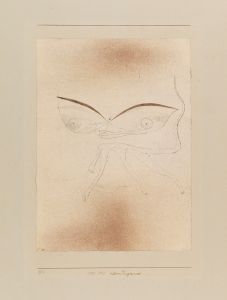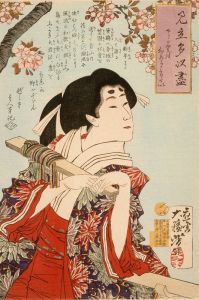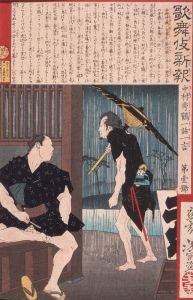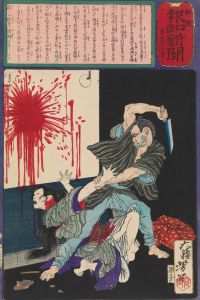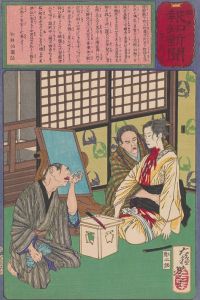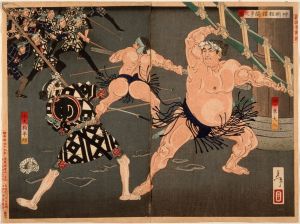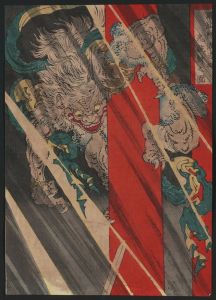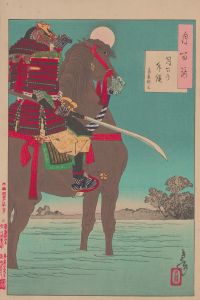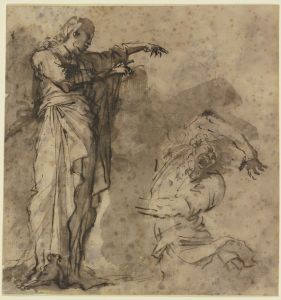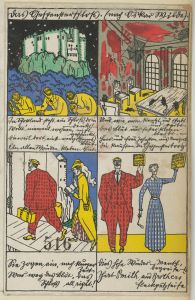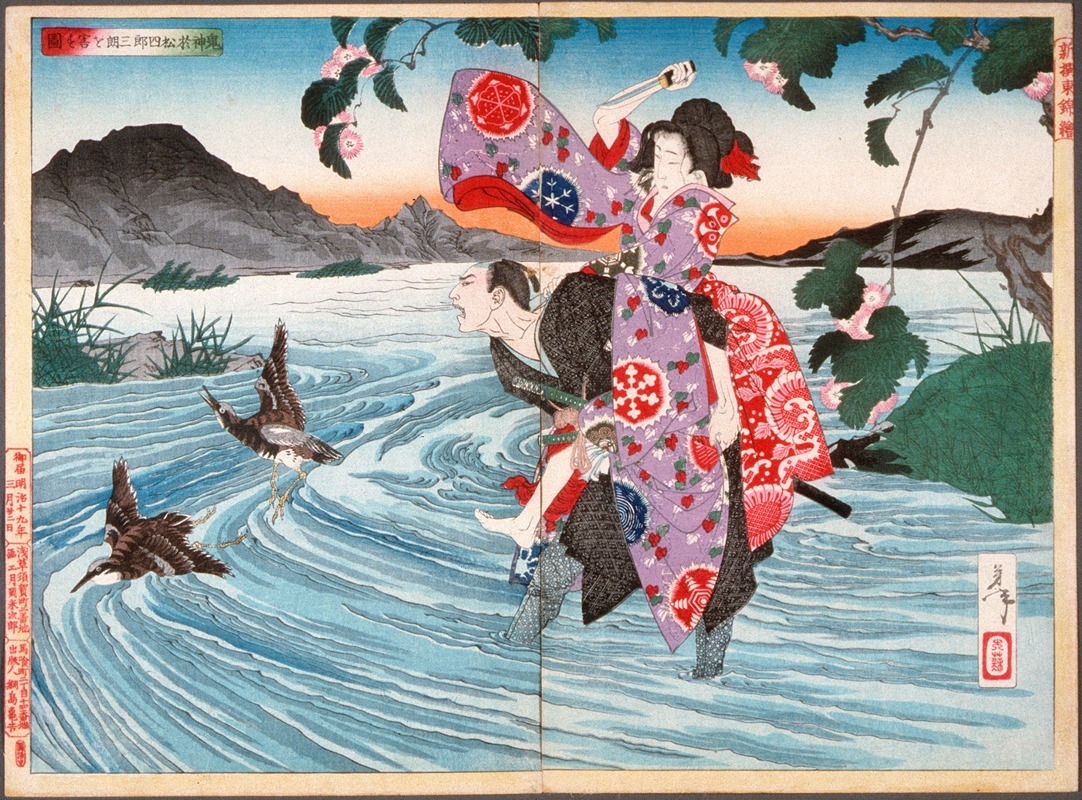
The Demon Omatsu Kills Shirōsaburō in the Ford
A hand-painted replica of Tsukioka Yoshitoshi’s masterpiece The Demon Omatsu Kills Shirōsaburō in the Ford, meticulously crafted by professional artists to capture the true essence of the original. Each piece is created with museum-quality canvas and rare mineral pigments, carefully painted by experienced artists with delicate brushstrokes and rich, layered colors to perfectly recreate the texture of the original artwork. Unlike machine-printed reproductions, this hand-painted version brings the painting to life, infused with the artist’s emotions and skill in every stroke. Whether for personal collection or home decoration, it instantly elevates the artistic atmosphere of any space.
"The Demon Omatsu Kills Shirōsaburō in the Ford" is a woodblock print created by the renowned Japanese artist Tsukioka Yoshitoshi. Yoshitoshi, who lived from 1839 to 1892, is celebrated for his innovative approach to ukiyo-e, a genre of Japanese art that flourished from the 17th through the 19th centuries. His works often depict historical scenes, kabuki actors, beautiful women, and supernatural themes, reflecting both traditional Japanese culture and the changing times of the Meiji era.
This particular print is part of Yoshitoshi's series "New Forms of Thirty-Six Ghosts" (Shinkei Sanjūrokkaisen), which was published between 1889 and 1892. The series is known for its vivid and imaginative portrayal of supernatural beings, legends, and ghost stories from Japanese folklore. Yoshitoshi's work in this series is noted for its dynamic compositions, dramatic use of color, and the ability to evoke emotion and intrigue.
"The Demon Omatsu Kills Shirōsaburō in the Ford" illustrates a dramatic and violent scene, characteristic of Yoshitoshi's interest in the macabre and the supernatural. The print depicts Omatsu, a character who is often portrayed as a vengeful spirit or demon, in the act of killing Shirōsaburō. The setting of a ford, or shallow river crossing, adds to the tension and drama of the scene, as water often symbolizes the boundary between the physical world and the spiritual realm in Japanese folklore.
Yoshitoshi's depiction of Omatsu as a demon highlights his skill in blending traditional Japanese themes with his unique artistic vision. The print captures the intensity of the moment through its composition and the expressions of the characters, showcasing Yoshitoshi's mastery of the woodblock printing technique. His use of color and line work creates a sense of movement and energy, drawing the viewer into the narrative.
The series "New Forms of Thirty-Six Ghosts" is significant in Yoshitoshi's oeuvre as it represents his mature style and his ability to adapt traditional subjects to the tastes of a modernizing Japan. During the Meiji period, Japan was undergoing rapid changes, and Yoshitoshi's work reflects both a nostalgia for the past and an engagement with contemporary themes. His prints from this series are considered some of his finest work and are highly valued by collectors and scholars of Japanese art.
Yoshitoshi's influence extends beyond his lifetime, as his work has inspired subsequent generations of artists and continues to be studied for its artistic and cultural significance. "The Demon Omatsu Kills Shirōsaburō in the Ford" is a testament to his ability to capture the imagination and convey complex narratives through the medium of woodblock printing.







